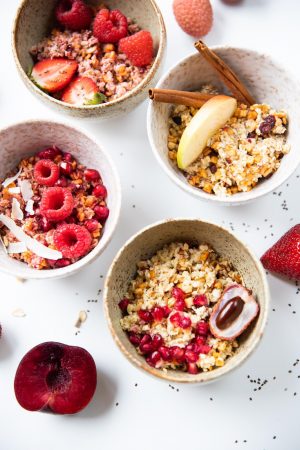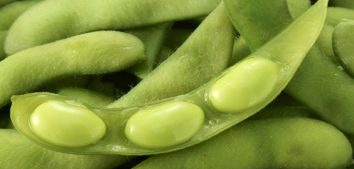
THE ROAD TO HEALTH: How to Start Eating Healthier? J. Mauricz
Where should we start if we want to have an integrated approach to our diet? In the next entry from our series “The Road to Health. Did you know that …? ”, Jakub Mauricz shows several basic issues that are worth considering. I’m sure you’ll find this post interesting! 🙂
World death rates caused by diseases is a relatively rare topic in the media. What do they look like? Homicide accounts for less than 1% of deaths. In contrast, nutrition-related illnesses account for over 60% of deaths! However, it is not a popular topic. The so-called diet-related diseases are largely what we come across on an everyday basis as diseases of affluence. These include hypertension, atherosclerosis, diabetes, excess weight, and obesity. These disorders are very closely related, and usually someone who is obese also suffers from diabetes or insulin resistance, as well as high blood pressure and atherosclerosis. The data is overwhelming and if we don’t pull ourselves together, the future will not be bright. An increasing number of people below the age of 20 suffers from gastrointestinal problems. And the reason is bad nutrition.
„Each choice you make today creates the foundation upon which you can build the health you desire.” – Dr Henri Roca, M.D.

It is said that dietetics is one of the few sciences where there can be many correct answers to one question. The problem is that some are 100% correct, while others solve only half of the underlying problem or condition. The task of a dietitian is to determine the simplest and most perfect therapy, the aim of which is to lead the patient to success – not only in the context of normalizing the body composition, but above all improving well-being, increasing energy levels, improving the functioning of the stomach and intestines, and the condition of the skin. As you probably know, it is also very important to take into account all the other remaining lifestyle factors that affect health.
Both genes and diet play a crucial role in our health. The possibility to change the expression of genes will cause a given trait to occur or not, which can help us avoid a disease. Epigenetics says that genes are not our destiny. They tell us how we should live, not what we will die of. Many people look for excuses in the fact that everyone in their family is obese. And when you look at their eating habits, it turns out that they are terrible. Who is guilty here? Genes? Or the lifestyle?
It is very important to realize that there is no such thing as neutral food. Everything we put in our mouths has an impact on our health – it builds it up or undermines it. Ann Wigmore summed it up perfectly: “The food you eat can be either the safest and most powerful form of medicine or the slowest form of poison.” This means that dripping water hollows out stone. I think we can all agree that the basic determinant of a healthy diet is its low level of processing. What does it mean? It means that a piece of meat or fish would be a better choice than a sausage, salami, or brawn. Instead of choosing the popular sugar-sweetened wheat flakes, a portion of oatmeal, millet or buckwheat is much better. Replace mayonnaise on your sandwich with a slice of avocado or some pesto made of parsley, garlic and olive oil.

There is no doubt that excess weight, insulin resistance and type 2 diabetes, atherosclerosis, hypertension and other heart diseases, as well as depression, autoimmune diseases (e.g. Hashimoto’s, atopic dermatitis, rheumatoid arthritis and others), are more and more common and following a poor quality, processed diet is an excellent way to develop many diseases.
Therefore, we should come up with some basic recommendations related to our nutrition. A good diet is one that is unprocessed, varied, and wholesome. However, it is also just as important to make sure that the diet can be applied for a longer period of time, preferably throughout life, by simply building healthy eating habits.
So what should a healthy diet consist of? Most of all water in all possible forms – soups, smoothies, lemonades, juice with no added sugar, as well as tea and coffee. Dehydration is a condition that does not occur in deserts only. Actually, we experience it every day: headaches, trouble concentrating, joint pain due to myofascial contractures, as well as dry mouth, a burning sensation when urinating. Proper hydration, including all the fluids in the daily supply, should amount to at least 35 ml / kg of dry weight, so to make things easier, an average woman should supply at least 1600 ml, and an average man 2300 ml.
The second indispensable part of a healthy diet is a proper amount of fiber. Unfortunately, the statistics in Poland show that the average consumption of fiber in Poland is 6-8 g per day, while it should be about 20-30 g. Our health depends a lot on an appropriate supply of fiber. Firstly, dietary fibers are the basic prebiotic medium for our microbiome, that is living bacterial cultures. Without an efficient intestinal ecosystem, maintaining adequate health and well-being is impossible, because bacteria are the determinant of health or disease development by controlling factors such as: the immune system (infections, allergies, autoimmune diseases), pro-inflammatory and anti-inflammatory cytokines ( chronic inflammation), mood, bowel movements, energy levels, skin condition, and more. This is probably why scientists have called the microbiome a health generator.
Contrary to what you might think, providing the right amount of fiber on a daily basis is not that difficult. Just choose oatmeal, millet or buckwheat flakes for breakfast instead of a white wheat roll, add a tablespoon of linseed to omelettes and pancakes, add a handful of nuts to your salad, and make chia or linseed pudding with coconut or almond milk for dessert. Fiber can be found in large amounts in whole grains, nuts and oilseeds (sesame, pumpkin and sunflower seeds), as well as in vegetables and fruits – both fresh and dried. Meeting your daily demand for fiber intake is simply a matter of awareness and will. It means choosing porridge with nuts and fruit over a hot dog or a baguette with ham. Besides, after eating a wheat roll, you will provide a similar amount of calories as in porridge, but the latter will give you satiety for 3-4 hours, and after eating the roll, you feel hungry after 10 minutes. And you overeat. This is how we develop insulin resistance, obesity, and consequently – cardiovascular diseases.
What about protein? Its supply depends on the degree and form of physical activity we prefer. You don’t have to include a big portion of animal protein in every meal, but people who are extremely active in strength adaptation, should have a high supply of wholesome protein in at least 3 out of 5 meals a day, the source of which can be: meat, fish, eggs, giblets, seafood. This doesn’t mean, however, that vegetable protein cannot fulfill a similar function. Mushrooms as well as buckwheat, quinoa and amaranth are also rich in protein and are a valuable source of fiber. People who aren’t bodybuilders can limit animal protein to even 1-2 meals a day, and supplement the remaining amount with the wholesome plant products mentioned above. You can also use legume seeds such as broad beans, peas, soybeans and beans from time to time.

For years, we have been observing two disturbing trends that negatively affect our health, well-being and quality of life. On the one hand, a drastic decline in the quality of food which results from the production process. And on the other hand, changes in our way of life. It is obvious that we live in a hurry. Our daily nutrition is often inadequate and we should supplement it. An interesting and increasingly popular solution is the so called MRP, or meal replacement products, i.e. wholesome meals with innovative formula, such as SuperSonic, which helps to provide full nutritional value, build immunity and even delay the aging process thanks to the content of nutraceuticals such as lycopene, Yarrowia, or bioesters of omega-3, -6 and -9 acids.
To sum up, our daily diet is mostly processed, rich in salt, sugar as flavor enhancers, full of trans fatty acids to enhance the taste sensation and prolong the shelf life of food products. There is also a huge amount of wheat, which we eat in the form of sweet buns and donuts, rolls, pizza, wafers, toast and all kinds of other food products such as pasta, noodles, dumplings and more. When we follow this kind of diet, full of flour and fat, often accompanied by cream, butter, lard, rapeseed oil and others, we provide the body with an excessive amount of calories, thus spoiling our shape, well-being and health. In this version, our diet is low in vegetables, fruits and whole grains, which are a source of fiber for us. Fiber is necessary to maintain the proper functioning of the intestines which are the generator of our health ?










Comments No Comments
Join the discussion…